If you’re considering adding a Bernedoodle puppy to your family, you may be wondering what colors Bernedoodles come in. As a mixed breed, crossed between a Poodle and Bernese Mountain Dog, Bernedoodles can come in many exciting and different coat colors and patterns.
So in this article, I’ll break down common Bernedoodle colors as well as looking at some rare coat colorings and patterns you might come across.
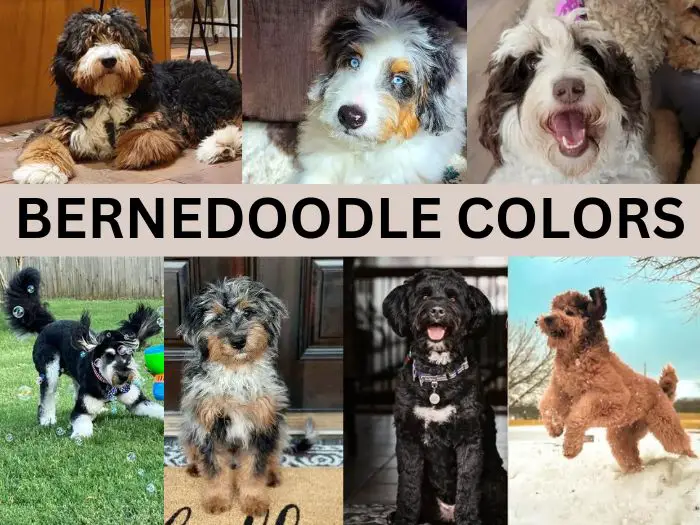
What Colors Do Bernedoodles Come In?
Bernedoodles come in a wide range of colors including the popular tricolor, solid colors including black, brown or chocolate, red, apricot, white and gray as well as bi-colors of black and white, black and brown, brown and white, red and white, apricot and white, and gray and white. Bernedoodle coat patterns include Merle, brindle, sable, phantom and parti.
Let’s look at each color and coat pattern more closely along with example photos of Berendoodle colors. We’ll also take a look at Bernedoodle genetics and how this influences their coat colors and patterns.
Related: Bernedoodle Temperament | Bernedoodle Coat Types: Differences Explained | Bernedoodle Size and Weight Guide
How Genetics Influences Bernedoodle Colors
In order to understand how Bernedoodles inherit their coloring and coat patterns, we need to look at their parent breeds, the Bernese Mountain Dog and the Poodle. We can learn how they influence Bernedoodle coloring by understanding their coat colors and patterns.
Bernese Mountain Dog Coat Color
The Bernese Mountain Dog is known for its tricolor coat of black, white and tan.
The dominant coat color is solid black. While white features on the chest often in the shape of a cross, and between the eyes and top of the head which is known as a blaze.
The paws and tip of the tale can also be white. While a tan or rust color features on the cheeks, eyes, legs and chest.
Poodle Coat Color
Poodles come in a wide range of colors, which is why Bernedoodles can also come in so many different colors and patterns.
Not only do poodles come in many different colors, their coat patterns can be solid, parti, phantom, sable, and bridle. As well as a few combinations that aren’t always officially recognized, such a Merle.
Poodle colors include black, brown or chocolate, white, cream, red, apricot, gray, silver beige, silver, blue and cafe au lait.
Now that we know what coloring each parent breed brings to the Bernedoodle, let’s look at what colors you can expect to find them in.
Tricolor Bernedoodle
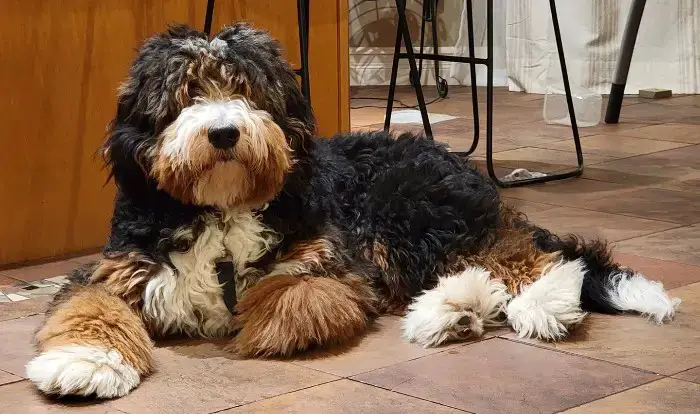
The tricolor Bernedoodle is the most popular and common coloring following the Bernese Mountain Dog parent. Tricolor Bernedoodles are typically black with white and tan coloring.
Often black is the dominant color, with white features on the chest reaching up to the nose, between the eyes and up to the top of the head, as well as the paws and tip of the tail. The tan points feature around the jaw and eyes, the paws and the tail.
Due to being a mixed breed, the tricolor Bernedoodle can also include a larger combination of three colors and could also include brown, red, apricot, cream and gray.
Tricolor Bernedoodle coloring can also be present in different coat patterns such as Merle. See our photo example below of a tricolor Merle Bernedoodle puppy.
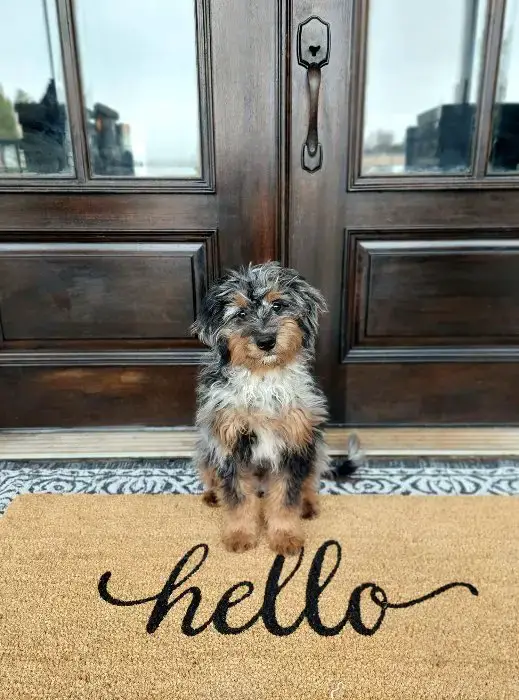
Solid Color Bernedoodle
Solid-color Bernedoodle coats aren’t all that typical because as you can imagine, the crossing of the Bernese Mountain Dog tricolor genetics is also passed on to their offspring. However, solid colors do occur, usually with small patches of another color.
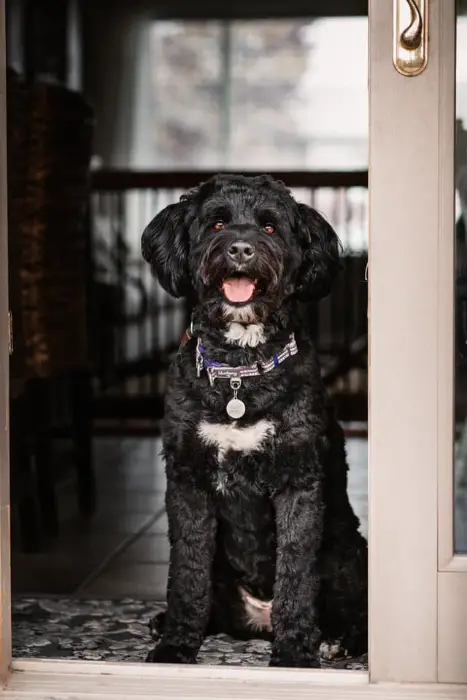
Solid-colored Bernedooldes come in black, white, cream and brown or chocolate. Black Bernedoodles can be rare because of the recessive gene that produces the color. Often black Bernedoodles will have some small white patches such as on the bottom of their paws or a small patch on the chest.
As well as solid black, later generations of Bernedoodles can come in a range of other solid colors such as white, cream, apricot, red, brown, and gray. And if a Bernedoodles coat fades (due to carrying the Poodle fading gene, more below), a previously red Bernedoodle can appear apricot or even cream.
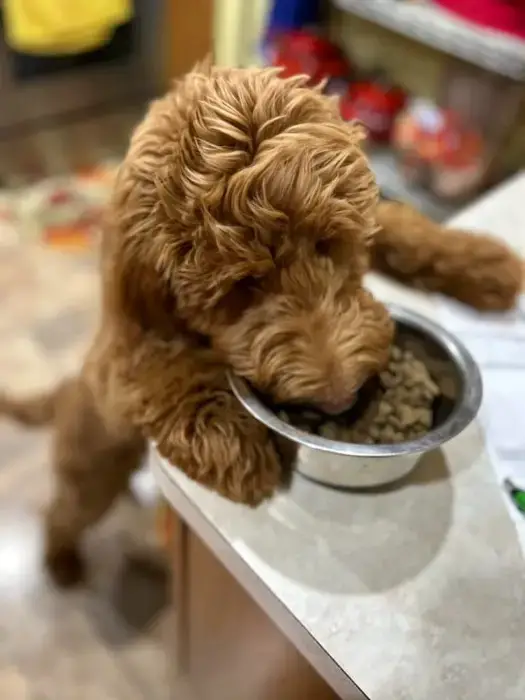
Though more often than a solid color, Bernedoodles can be bi-color.
Bi-Color Bernedoodle
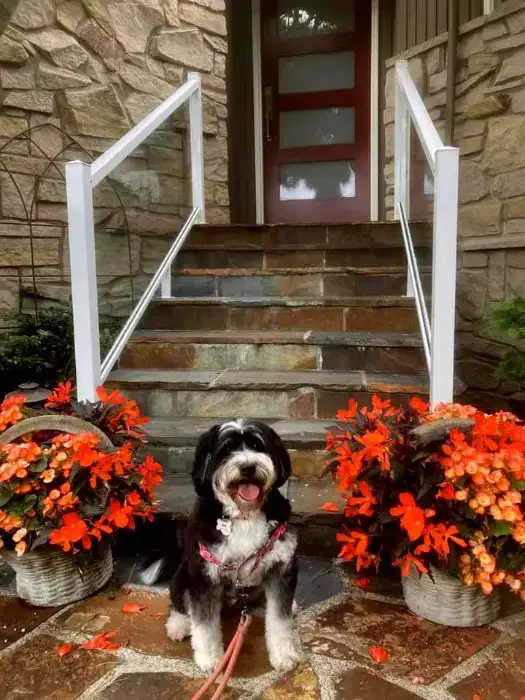
Bernedoodles with a bi-colored coat have two colors. One color is the dominant color for example black, with patches of a lighter color such as white.
As well as bi-color black and white Bernedoodle, other bi-color combinations can include:
- Black and Brown
- Brown and White
- Red and White
- Apricot and White
- Cream and White
- Gray and White
Merle Bernedoodle
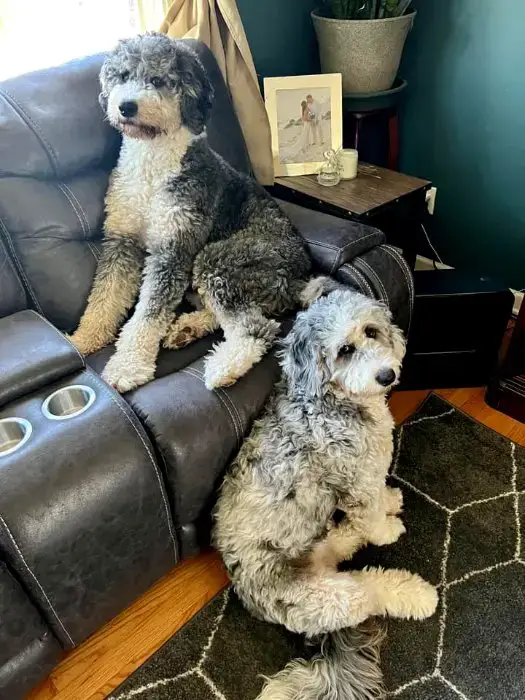
The Merle Bernedoodle can be similar to the tricolor only the black coloring is replaced with gray which is marbled with a darker color.
Overall, the tricolor Merle Bernedoodle looks like a lighter, and sometimes spotted, version of the tricolor Bernedoodle. But just as often, the Merle pattern may not resemble the tricolor and may instead be a different pattern altogether.
Merle Bernedoodles can be blue Merle or red Merle. Blue Merle is shades of gray while red Merle is shades of brown. Sometimes a blue Merle will have patches of brown.
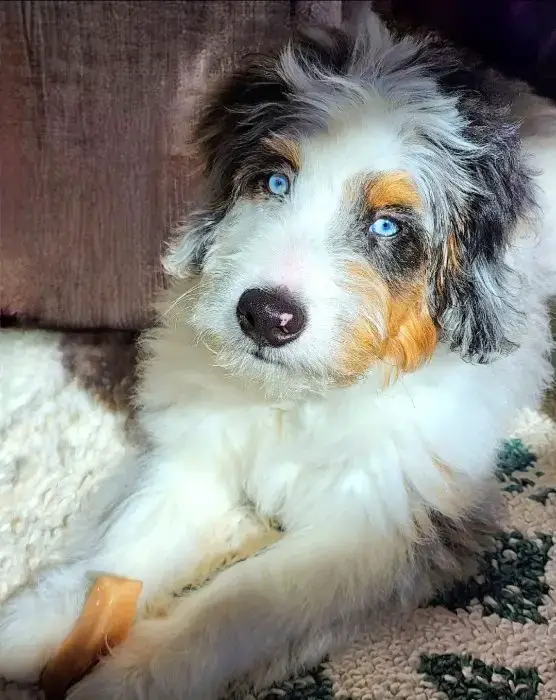
Some potential new owners of a Merle coat Bernedoodle may have questions as to the health of their pup. And that’s because a “double Merle” can develop health issues relating to their vision, hearing and their skin. A double Merle refers to both parents carrying the Merle gene and passing them on to their puppies.
However, rest assured, a responsible breeder will ensure there is only one Merle gene present which will ensure a perfectly healthy Bernedoodle. Dogs with just one Merle gene are just as healthy as dogs with other coats.
The Merle Bernedoodle coat is a rare coloring but because of the growing popularity, breeders are seeking out this coat type for their pups.
Brindle Bernedoodle
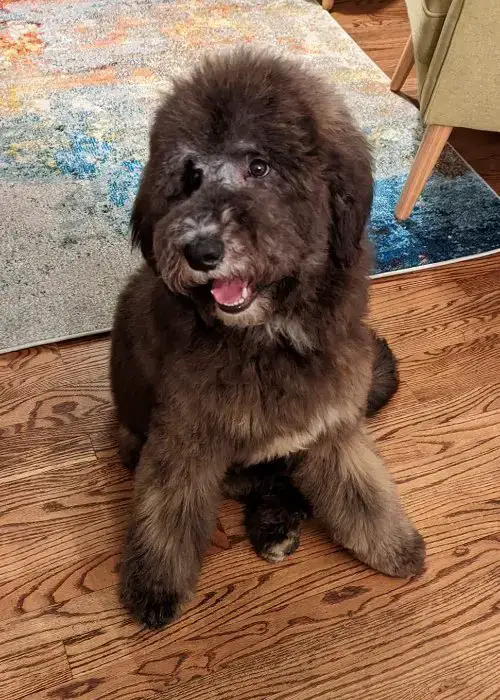
The brindle Bernedoodle coat coloring is also referred to as a tiger-striped coat due to the subtle black stripes running over the coat.
Often the base coat is a reddish brown color that is covered in a very light black stripe.
Brindle coat coloring is not always very noticeable or pronounced in Bernedoodles and may only be present on part of the coat.
Our photo above shows a Bernedoodle with a subtle brindle coat.
Sable Bernedoodle
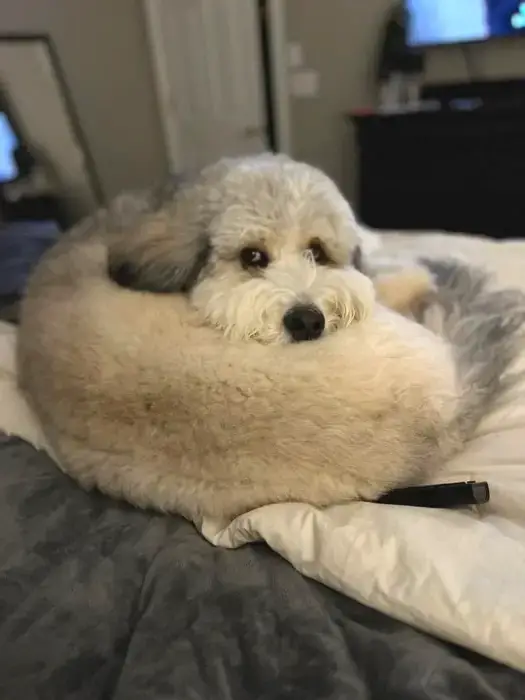
Sable Bernedoodle coats are those with black tips on the end of each hair from the base of any other solid color. For example, a solid brown coat with black tips creates a shaded effect. This coat type has also been described as ‘burnt toast’ in order to help envisage what the sable coat looks like.
There is no particular pattern and the sable coat may or may not include the white coloring associated with the Bernese Mountain Dog. Sable coloring can also be present in a tricolor Bernedoodle or any other coloring.
Our photo above shows sable coloring on the ears and tail. The sable coloring is one of the highest for fading, also known as clearing. This means the black-tipped hairs may actually fad as the puppy grows, often leaving the sable coloring on just the ears and tail.
The photo below shows sable coloring on the head, ears and tail of this Bernedoodle. The gradient effect of the sable coloring is obvious around the head.
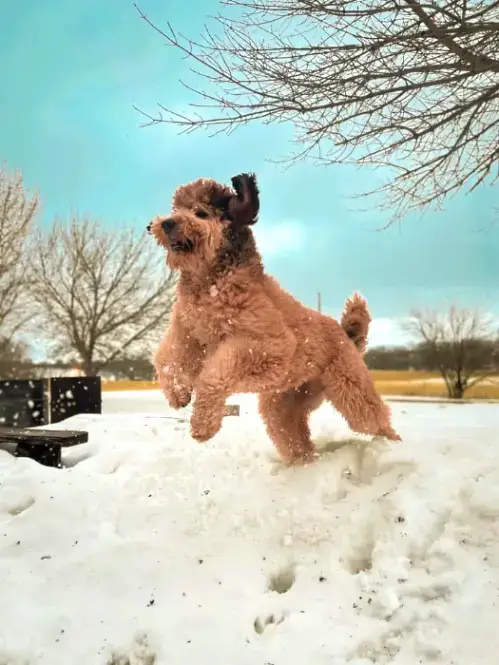
Phantom Bernedoodle
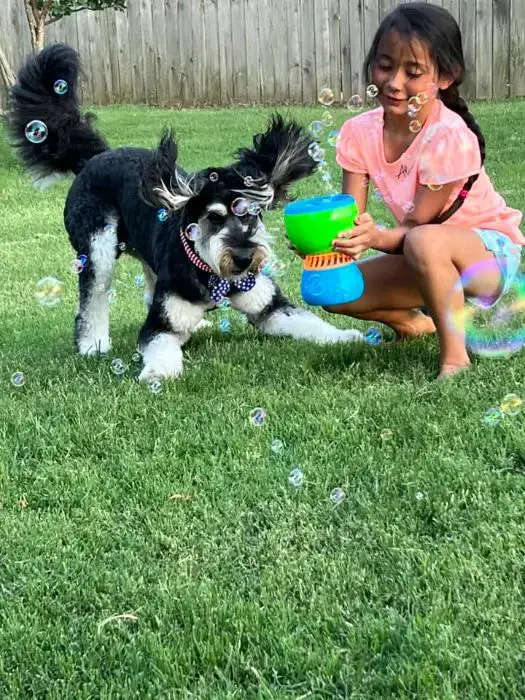
The phantom Bernedoodle color is made up of two colors. One color is the dominant color with patches of a second lighter color.
The phantom pattern second coloring presents on the chin and sides of the muzzle, the eyebrows, chest, paws and legs as well as under the dog’s tail.
The pattern of the phantom coloring follows the tricolor Bernedoodle pattern. Often this can look like a dominant black coat with patches of tan. White can also feature in minimal amounts.
In our photo example above, the Bernedoodle has a dominant solid black coat with patches of cream in a classic phantom pattern.
Parti Bernedoodle

The Parti Bernedoodle is a coat with at least 50% white with patches or spots of another color or colors. In our example photo above, the Bernedoodle at the front, has a mainly white coat with patches of brown.
Parti Bernedoodles are often white with patches of either black or brown. However, being a mixed breed, this can also include other colors.
What Color Bernedoodle is Rare?
Colors such as solid black or white are fairly rare Bernedoodle colors because they are only inherited through a recessive gene.
Merle, sable and bridle are also rare colors for a Bernedoodle.
The most popular Bernedoodle color is the classic tricolor, so if you’re after this color type, you may have to put your name down on a waitlist with a breeder.
While a Merle tricolor Bernedoodle is also sought after and often commands the highest price.
Does A Bernedoodles Coat Get Lighter Or Fade?
If your Bernedoodle inherits the fading gene (from the Poodle parent) then its coat can fade or clear as it grows.
If the color is going to fade, it will do so as the adult coat starts coming in at around 6-10 months.
Which Bernedoodle Color Should You Choose?
Of course, the Bernedoodle color you choose is completely up to you! The color of your Berendoodle does not affect its personality or its suitability for you and your family. Nor does the color affect the health of your Bernedoodle.
However, lighter-colored Bernedoodles can show dirt on their coats more easily.
Lighter colored coats can also more easily show tear stains and wet muzzles for longer as a result of drinking water.
At the end of the day, the best Bernedoodle color is the one that you love the most!
Related:
